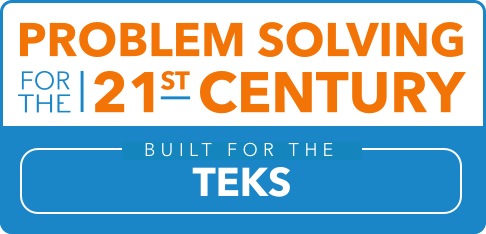Kindergarten
The Addition and Subtraction Unit involves understanding the processes of addition and subtraction in order to solve problems and answer questions such as:
- If we put the beans in this jar with the beans in this bowl, how many beans will there be?
- If we start with this many beans and give three beans away, how many beans will there be?
Standards covered: K.3A, K.3B, K.3C
Grade 1
The Equivalence Unit involves understanding the meaning of the equal sign in order to answer questions such as:
- If I have 5 red counters and 4 yellow counters on one side of the equal sign, how many yellow counters must I put with two red counters to equal the number of counters on the other side of the equal sign?
- If I have 7 on this side of the equal sign, what numbers cans I put on the other side of the equal sign to make a true statement?
Standards covered: 1.5E
Grade 2
The Addition and Subtraction Unit involves understanding the processes of addition and subtraction in order to solve problems and answer questions such as:
- If we know all of the parts, how can we find the whole?
- If we know the whole and one of the parts, how can we find the missing part?
- How can you use place value to explain the strategies you used to solve this addition (subtraction) problem?
- Given an equation, can you create an addition or subtraction situation to match it? How can you prove your situation matches the equation?
Standards covered: 2.4A, 2.4B, 2.4C, 2.4D
Grade 3
The Comparing Fractions Unit involves representing fractional parts of whole objects, lines, and sets in order to answer questions such as:
- Why must we use the same “whole” when comparing fractional parts?
- How can you prove that fractions are equivalent when using an area model such as pattern blocks or tangrams?
- How can you prove that fractions are equivalent when using a linear model such as a strip or number line?
- How can you prove that fractions are equivalent when using a set model such as 2-color counters?
Standards covered: 3.3F, 3.3G, 3.3H
Grade 3
The Relationship between Multiplication and Division Unit involves identifying situations in the world outside the classroom in which each operation may be used to solve problems. Questions to answer may include:
- How do multiplication situations differ from division situations?
- How are the operations of multiplication and division related?
- How can mental math, rounding, and/or the use of compatible numbers help to determine whether the solution to a multiplication or division problem makes sense?
Standards covered: 3.4K
Grade 4
The Adding and Subtracting Fractions Unit involves using a variety of methods to join or separate parts referring to the same whole. Methods may include replacing mixed numbers with equivalent fractions; using properties of operations and the relationship between addition and subtraction; and using visual models of fractions. Questions to answer may include:
- Why must we use the same “whole” when adding or subtracting fractional parts?
- How can a number line represent adding or subtracting fractions?
- How can benchmark fractions help to determine whether a sum or difference makes sense?
Standards covered: 4.3A, 4.3B, 4.3E, 4.3F
Grade 4
The Algebraic Reasoning Unit involves developing an understanding of expressions and equations to answer questions such as:
- How can you use equation(s) to represent this story problem? What do the variables in your equation(s) represent?
- How does a table help to identify the relationship(s) between real-life paired numbers? Can you come up with a rule to describe this relationship? Explain.
- How might an expression be used describe the relationships in your table? How can you use the expression to extend the number pattern in your table?
Standards covered: 4.4A, 4.5A, 4.5B
Grade 5
The Products and Quotients with Decimals Unit involves using patterns and place value to develop strategies to multiply and divide decimals. Questions to answer may include:
- How are the properties of place value (additive, multiplicative, base-ten & positional) useful in developing efficient procedures for multiplying and dividing decimals?
- How can mental math, rounding, and/or the use of compatible numbers help to determine whether a solution is reasonable?
- Given an equation involving finding products and/or quotients with decimals, how can you create a situation to match it?
Standards covered: 5.3D, 5.3E, 5.3F, 5.3G

